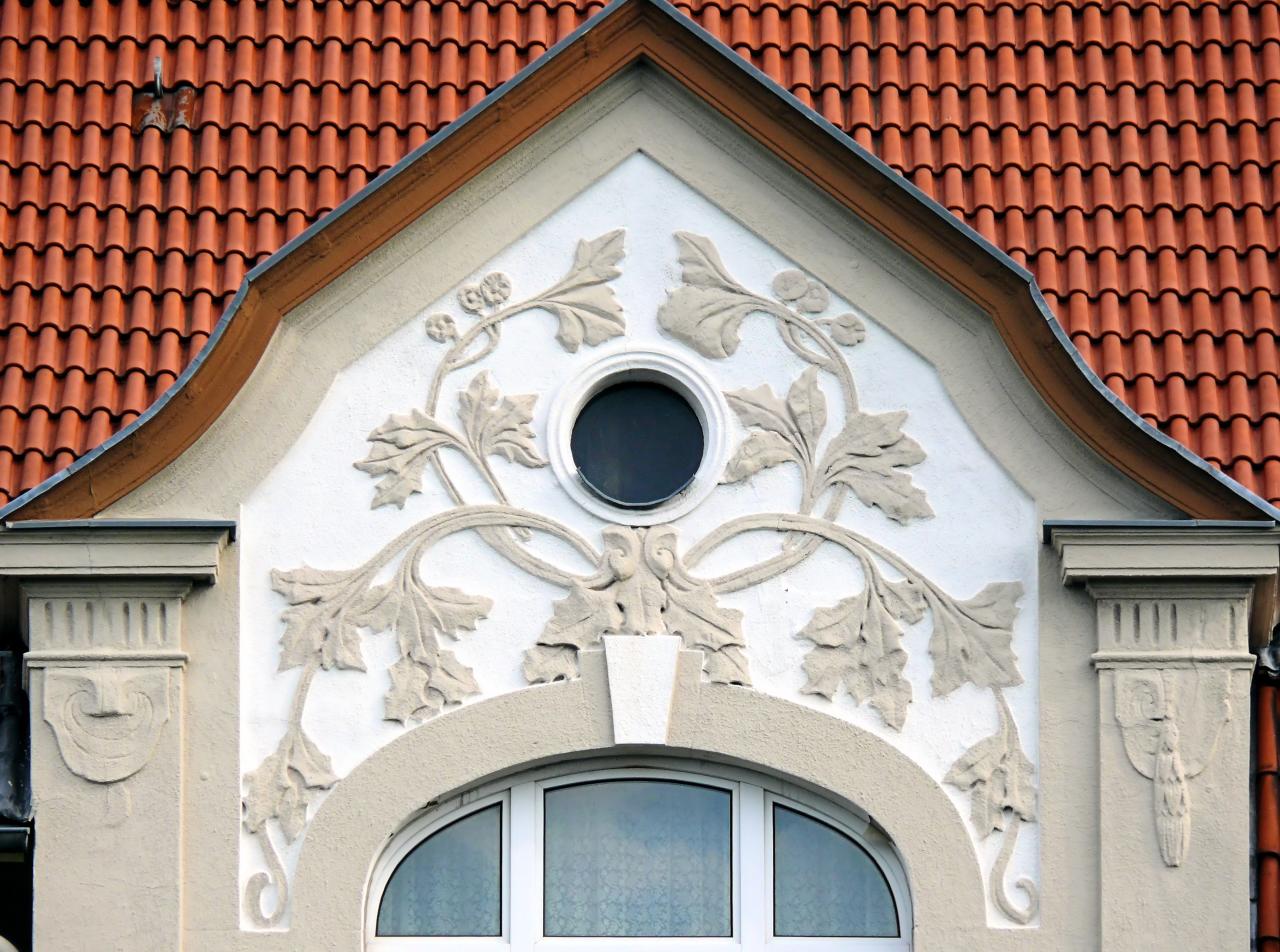#2695. Art Nouveau Pediment with Foliate Relief Decoration
Before us is an expressive fragment of a residential building façade, likely from the early 20th century, executed in Art Nouveau or eclectic style with elements of national romanticism. The central focus of the composition is an elegantly designed pediment with floral ornamentation characteristic of the Art Nouveau movement.
The façade is presented as a white plastered surface that contrasts with the terracotta tile roofing. Special attention is drawn to the decorative relief of stylized leaves, probably oak or maple, executed in the same light palette as the main surface of the pediment. This relief ornament gracefully curves, creating flowing lines typical of Art Nouveau.
In the upper part of the pediment, there is a small circular dormer window with simple framing, which serves not only as a light source for the attic space but also as the compositional center of the entire decorative solution. Below the relief ornament is an arched window divided into three sections, adding rhythm and lightness to the façade.
The lateral parts of the pediment are reinforced with decorative pilasters with relief elements, which give the structure visual stability and completeness. Wooden or metal elements of the roof and cornice frame the white surface of the pediment, creating a clear architectural frame for the entire composition.
This type of decorative façade solution was especially popular in Northern European architecture of the late 19th and early 20th centuries, where traditions of national romanticism merged with the innovative explorations of Art Nouveau.
